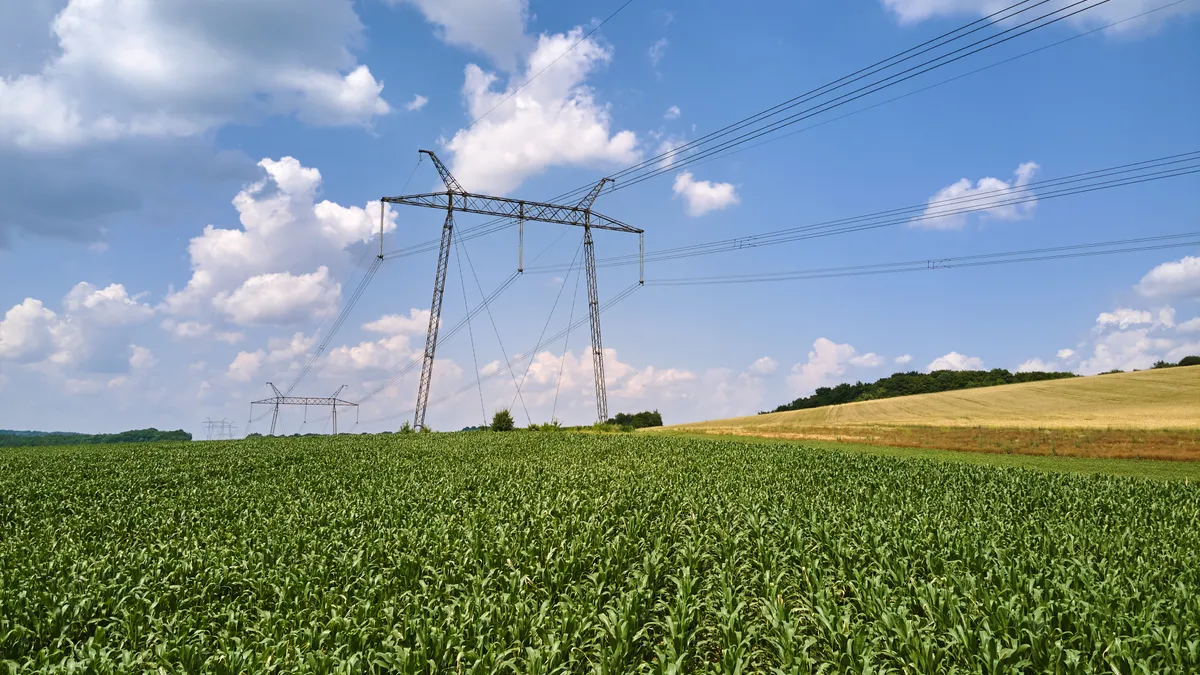Dive Brief:
- The Illinois Commerce Commission has adopted a Renewable Energy Access Plan, or REAP, that asks utilities and transmission operators to consider grid-enhancing technologies in transmission planning.
- The plan will serve as a roadmap to ensure transmission and interconnection do not become a barrier to Illinois' 2050 decarbonization target. Though not included in initial drafts, the commission recommended implementation and study of grid-enhancing technologies in the final version on a belief that they represent a cost-effective avenue to expand transmission capacity.
- Although the plan represents the first time a state regulatory has ruled on the use of grid-enhancing technologies, it probably won't be the last, according to Nick Wallace, an associate attorney at the Environmental Law & Policy Center.
Dive Insight:
Proponents of grid-enhancing technologies just got a boost from the Illinois Commerce Commission.
The state's REAP, which the commission finalized and adopted on May 30, asks utilities and regional transmission operators to “better incorporate” grid-enhancing technologies such as dynamic line ratings, advanced power flow controllers and topology optimization in future transmission planning processes. The order also directs the commission's staff to identify potential barriers to the adoption of grid-enhancing technologies over the course of the next year.
The plan also calls for the creation of “REAP Zones” dedicated to renewable energy deployment in coordination with transmission development. And it lays out plans to identify opportunities to use regional electricity markets and trade to improve efficiency, to improve energy modeling and forecasting, and to re-examine the state's clean energy incentives.
“The REAP will serve as an important resource for regulators, policymakers, [regional transmission organizations], and other stakeholders as Illinois’ energy transition continues to evolve, all while keeping affordability top of mind and ensuring our grid remains resilient and reliable,” ICC chairman Doug Scott said in a June 4 statement.
Illinois' Climate and Equitable Jobs Act of 2021 required the commission to develop and adopt a Renewable Energy Access Plan. The plan must be updated and revised in 2025 and every two years thereafter.
The initial draft of the plan, issued in December 2022, didn't mention grid-enhancing technologies. But a coalition of environmental and trade organization filed comments on the draft calling for the recognition of these technologies and their potential in the final version, Wallace said. The commission's staff ultimately joined the groups in supporting the revision.
Though FERC's recent Order 1920 also requires transmission planners to consider alternative transmission technologies, Wallace said this is the first time a state regulatory body has implemented such a requirement. That's significant, he said, because smaller transmission projects often fall under state authority.
Grid-enhancing technologies “are much faster to deploy than most transmission infrastructure, which means they can be a real short-term solution,” Wallace said. “They're also really cost effective, they are good for rate payers, and will allow for increased transmission capacity ...They have been tried, they have been deployed, and they have been more effective when deployed than the theoretical studies think they might be, so at this point there is no reason to leave them sitting on the shelf.”
The Illinois roadmap will also set the tone for future regulation in other states, especially neighboring states in the upper Midwest that tend to look to the Illinois Commerce Commission for leadership, Wallace said.














